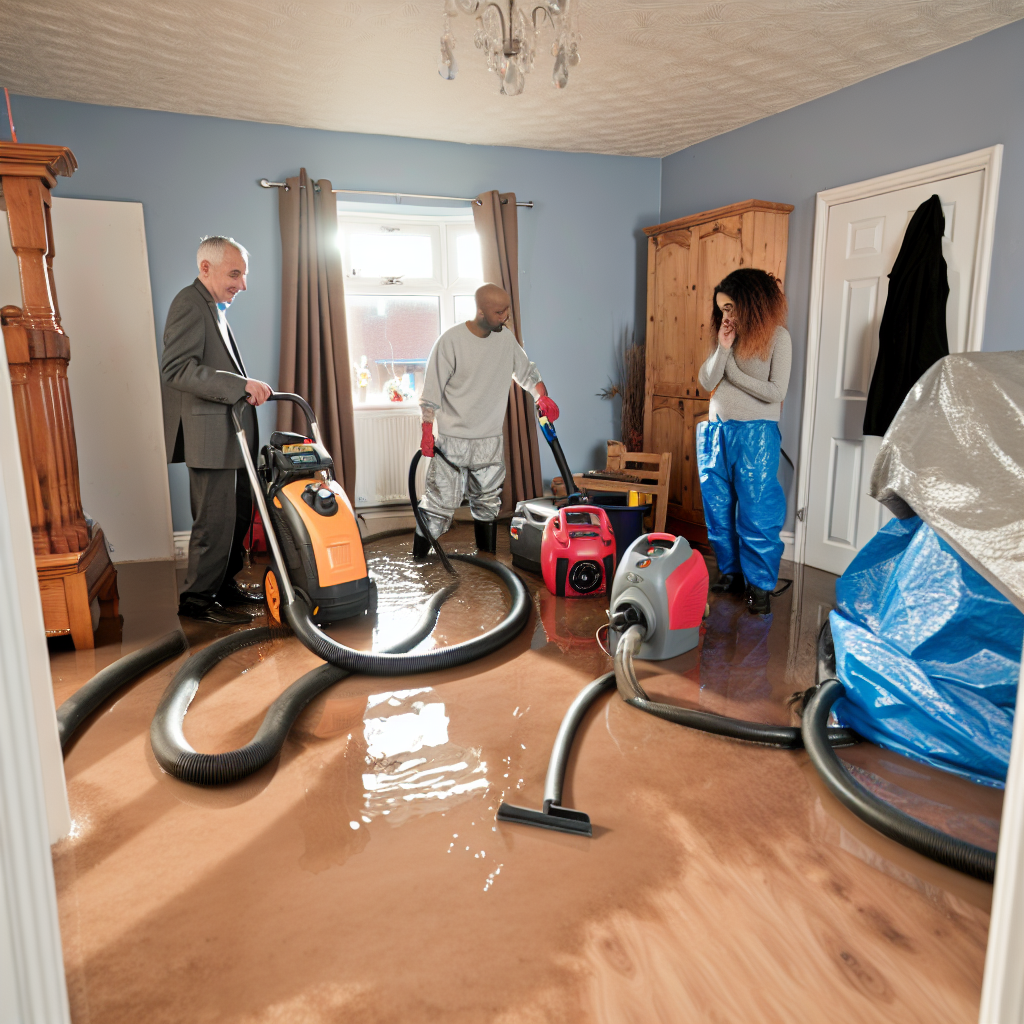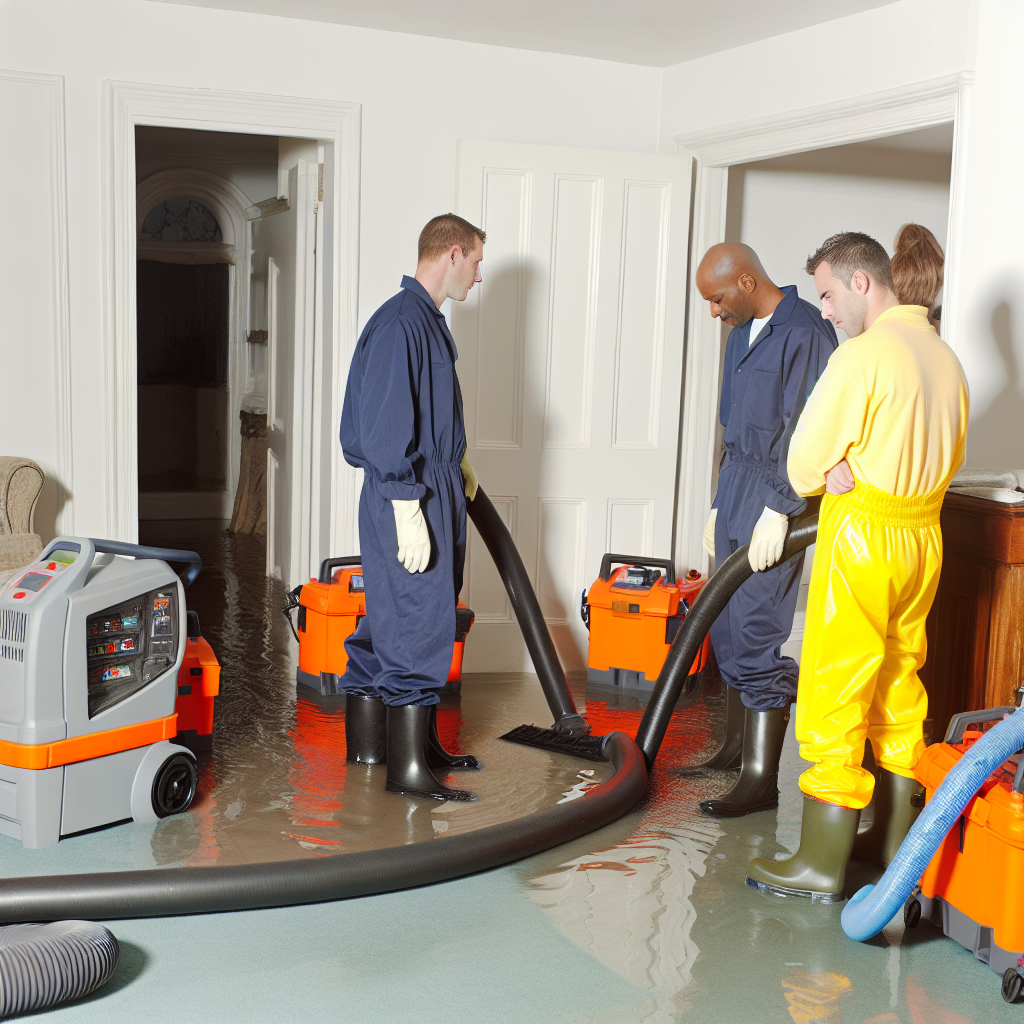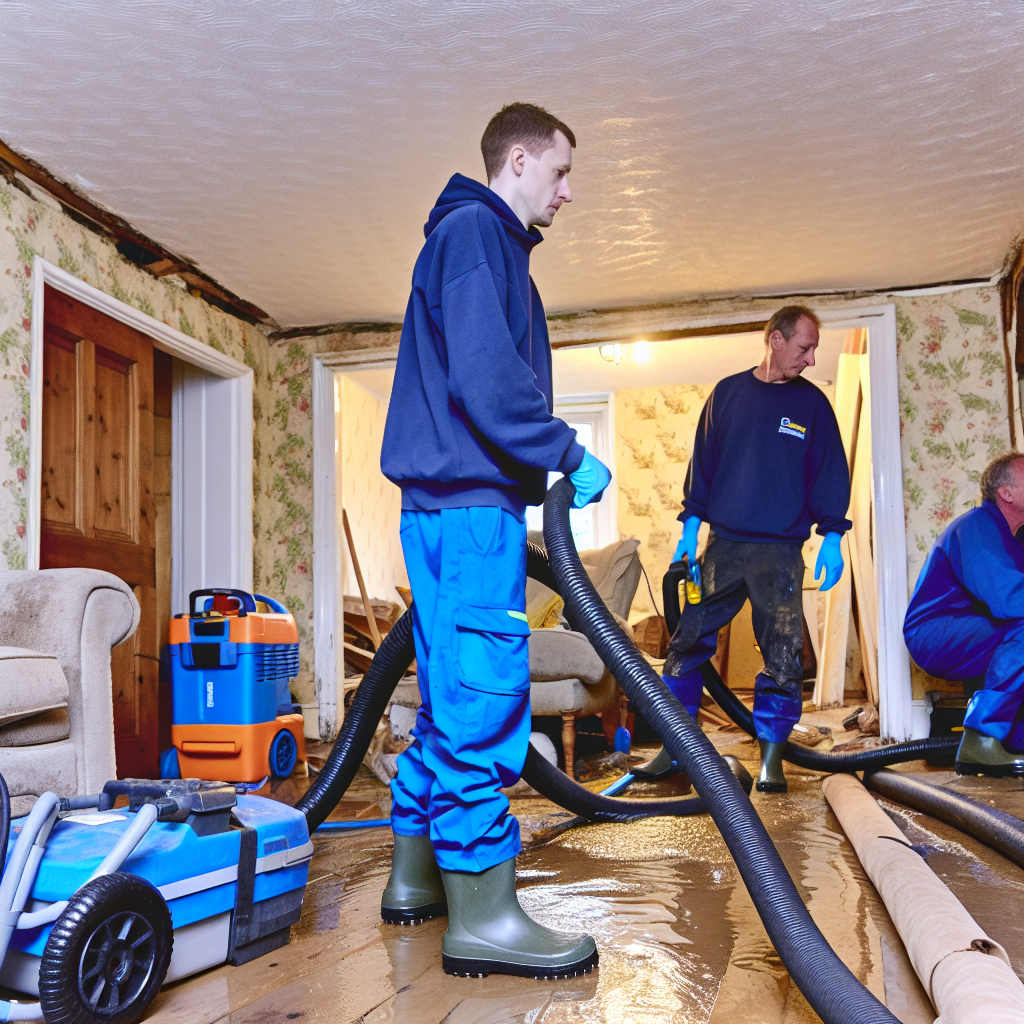Guidelines for UK Homeowners: Efficient Flood Damage Cleanup and Restoration Techniques for a Safer Home
Introduction
With the ever-visible impacts of climate change, flood events are becoming more commonplace, posing an escalating risk to UK homeowners. These unfortunate incidents can cause significant damage to homes, disrupting lives and causing financial burden. Therefore, dealing effectively with flood damage, restoring homes, and implementing measures to prevent future flooding is increasingly important. With the correct clean-up techniques, homeowners can ensure their homes are safe, clean, and structurally sound after a flood. This article will provide efficient cleanup and restoration techniques for flood-damaged homes, based on UK regulations and industry standards.
Table of Contents
– Assess and Document the Damage
– Implementing a Safe and Efficient Cleanup Process
– Professional Cleanup and Restoration Services
– Implementing Preventive Measures
– Frequently Asked Questions
Assess and Document the Damage
Before initiating the cleanup process post-flooding, it is crucial to perform a thorough assessment to understand the extent of the damage and document it meticulously for insurance claims. According to the UK Environment Agency, an estimated 5.2 million properties in England are at risk of flooding [1]. When faced with such an unfortunate event, professionals recommend documenting the damage with photographs and detailed descriptions, ensuring the process of claiming insurance is smooth and accurate.
Implementing a Safe and Efficient Cleanup Process
Timing is everything when it comes to minimizing the impact of water damage to your home. Removing water, drying the affected areas, and disinfecting should be done as quickly as possible to prevent further damage. This is done to prevent mould growth that can occur within 24-48 hours of flooding [2].
Professional Cleanup and Restoration Services
Professional agencies operate according to standards set by the UK’s industry standard for damage management, the British Damage Management Association (BDMA) [3]. They have specialized tools and knowledge that allow them to handle processes such as dehumidification, thermal imaging, and moisture detection effectively, resulting in maximum recovery of your property post flood.
Implementing Preventive Measures
Understanding your area’s flood risk is the first step to preparing for and potentially avoiding future flood damage. The Environment Agency provides a comprehensive flood map that allows homeowners to check the risk level of their area [4]. This can guide the implementation of preventive measures like flood barriers, flood doors and airbrick covers, which can be instrumental in mitigating future flood risks.
Frequently Asked Questions
What are the risks of delayed flood damage cleanup?
What techniques are used by professionals for structural drying?
Are there regulations for waste disposal after flood damage?
Can you recommend any preventive measures against future flood incidents?
What resources are available for flood forecasts and warnings in the UK?
Conclusion
Using effective cleanup techniques and engaging professionals can significantly reduce the impact of flood damage and help homeowners quickly restore normalcy to their lives. With the insights from this article, homeowners can handle flood damage more effectively, minimize future risks, and secure a safer home. Remember, the safety of your home and family is the priority, so do not hesitate to seek professional help when dealing with flood damage.
References
[1] K. Staines et al. (2017). “Rapid Assessment of Flood Risk to UK Homes”. Environment Agency. Link
[2] UK Legislation. (2001). “The Environmental Protection Act 1990”. Link
[3] British Damage Management Association (2014). “Professional damage management standards”. Link
[4] Environment Agency. (2018). “Check your flood risk”. Link




